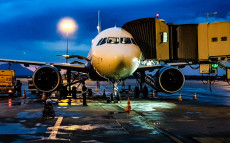- pathfindersAI
- Job Profile
Air Traffic Controllers
Summary
Air Traffic Controllers: A Career in Commanding the Skies
What They Do
Air Traffic Controllers (ATCs) play a pivotal role in maintaining the safety, efficiency, and effectiveness of air travel. They are responsible for coordinating the movement of aircraft to ensure safe distances between them. This coordination spans a variety of tasks, from managing planes on runways to guiding them through clouds at high altitudes. Their command of airspace ensures that millions of travelers reach their destinations safely and on time.
Job Responsibilities
The daily duties of an Air Traffic Controller are both diverse and critical. ATCs are stationed in control towers, approach control facilities, or en route centers, and their primary responsibilities vary depending on their location. In control towers, they oversee all ground traffic on runways and taxiways and issue takeoff and landing instructions to pilots. In approach and departure control facilities, they manage aircraft as it begins or completes its journey, ensuring that they maintain proper separation as they ascend or descend. En route controllers, on the other hand, are responsible for aircraft as it cruises at high altitudes through various sectors of controlled airspace. Additionally, ATCs must handle emergency situations effectively, such as rerouting planes during weather disruptions or managing other in-flight emergencies.
Essential Skills
The role of an Air Traffic Controller demands a specific set of skills critical for their high-stakes environment. Exceptional communication is paramount; ATCs must convey information clearly and authoritatively to pilots and other aviation staff. Equally important is situational awareness, as they must monitor multiple moving aircraft and rapidly shifting conditions simultaneously. Problem-solving skills are essential, particularly under time pressure, requiring swift and sound decision-making. Finally, ATCs must possess strong attention to detail, ensuring that no aspect of a flight plan is overlooked, thereby safeguarding the lives of passengers and crew.
Educational Pathways
Aspiring Air Traffic Controllers typically pursue a rigorous educational pathway, starting with a degree. Many opt for degrees in air traffic management or a related field, often offered by universities and colleges with specialized aviation programs. However, a degree in a different field coupled with a proven aptitude through rigorous testing can also suffice. The Federal Aviation Administration (FAA) requires candidates to pass a demanding selection process, including the Air Traffic Selection and Training (AT-SAT) exam. Successful candidates then undergo extensive training at the FAA Academy, receiving practical and theoretical instruction. This training is continuously updated to keep pace with advancements in technology and changes in regulations.
Career Prospects
The career prospects for Air Traffic Controllers are both promising and competitive. According to the U.S. Bureau of Labor Statistics, employment in this field is expected to grow steadily, reflecting the ongoing demand for air travel. ATCs typically enjoy a lucrative salary, with many earning well above the national average. Additionally, the role offers substantial job security and benefits, largely due to the critical nature of their work. Career advancements are also prevalent, with opportunities to transition into supervisory roles or specialized positions within the air traffic management framework.
Conclusion
In conclusion, a career as an Air Traffic Controller is a prestigious and rewarding path that demands a high level of dedication, skill, and precision. For those with a passion for aviation and a penchant for managing complex situations, this role offers not only financial rewards but also the intrinsic satisfaction of ensuring the safety and efficacy of air travel. With a structured educational pathway and promising career prospects, becoming an Air Traffic Controller stands out as a desirable and fulfilling professional choice in the ever-evolving field of aviation.
Video
Compensation
| State | Median Salary | Median Hourly | Positions |
|---|---|---|---|
| AL | 108,100 | 51.97 | 210 |
| AK | 120,040 | 57.71 | 470 |
| AZ | 122,780 | 59.03 | 360 |
| AR | 91,440 | 43.96 | 160 |
| CA | 160,490 | 77.16 | 2,490 |
| CO | 168,580 | 81.05 | 690 |
| CT | 107,870 | 51.86 | 70 |
| DC | 34,130 | 16.41 | 610 |
| FL | 137,240 | 65.98 | 2,030 |
| GA | 166,380 | 79.99 | 970 |
| HI | 144,210 | 69.33 | 210 |
| ID | 109,820 | 52.80 | 60 |
| IL | 171,810 | 82.60 | 950 |
| IN | 150,780 | 72.49 | 590 |
| IA | 89,520 | 43.04 | 90 |
| KS | 147,180 | 70.76 | 420 |
| KY | 121,970 | 58.64 | 190 |
| LA | 93,870 | 45.13 | 240 |
| MD | 105,310 | 50.63 | 110 |
| MA | 96,370 | 46.33 | 130 |
| MI | 106,390 | 51.15 | 390 |
| MN | 166,860 | 80.22 | 630 |
| MS | 87,730 | 42.18 | 130 |
| MO | 109,660 | 52.72 | 240 |
| MT | 92,980 | 44.70 | 70 |
| NV | 123,280 | 59.27 | 230 |
| NH | 176,260 | 84.74 | 420 |
| NJ | 122,620 | 58.95 | 190 |
| NM | 136,510 | 65.63 | 350 |
| NY | 135,590 | 65.19 | 1,250 |
| ND | 113,880 | 54.75 | 90 |
| OH | 151,170 | 72.68 | 700 |
| OK | 115,170 | 55.37 | 260 |
| PA | 121,310 | 58.32 | 390 |
| RI | 118,960 | 57.19 | 50 |
| SC | 101,670 | 48.88 | 180 |
| SD | 92,830 | 44.63 | 50 |
| TN | 146,060 | 70.22 | 580 |
| TX | 159,100 | 76.49 | 2,060 |
| UT | 146,350 | 70.36 | 360 |
| VA | 177,110 | 85.15 | 1,110 |
| WA | 155,210 | 74.62 | 560 |
| WV | 82,740 | 39.78 | 100 |
| WI | 100,090 | 48.12 | 150 |
| WY | 80,100 | 38.51 | 40 |
Similar Occupations
In this area you will find other occupations that are close to the one you were viewing in tasks, knowledge and work environment. If the primary job profile you are viewing isn't quite to your liking, take a look around and see what else is available.
Basic and Premium Accounts have more alternative occupations available than the Free account.

Aircraft Cargo Handling Supervisors - 53-1041.00
Aircraft Cargo Handling Supervisors oversee the loading, unloading, and securement of cargo on aircraft, ensuring adherence to weight and balance specifications and safety protocols. They coordinate with ground crew and logistics personnel to optimize efficiency and compliance with aviation regulations.
-
$58,920/yr
Median Pay -
9,020
Number of Jobs

Airfield Operations Specialists - 53-2022.00
An Airfield Operations Specialist oversees the safe and efficient movement of aircraft within the airfield, coordinating ground support activities and ensuring compliance with aviation regulations. They manage runway and taxiway conditions, communicate with pilots, and handle emergencies to maintain optimal airport operations.
-
$51,140/yr
Median Pay -
18,320
Number of Jobs